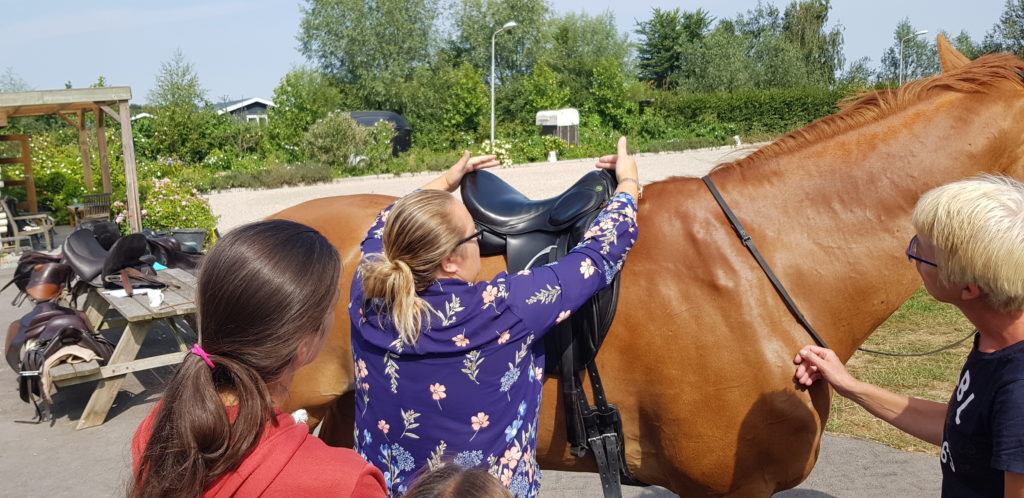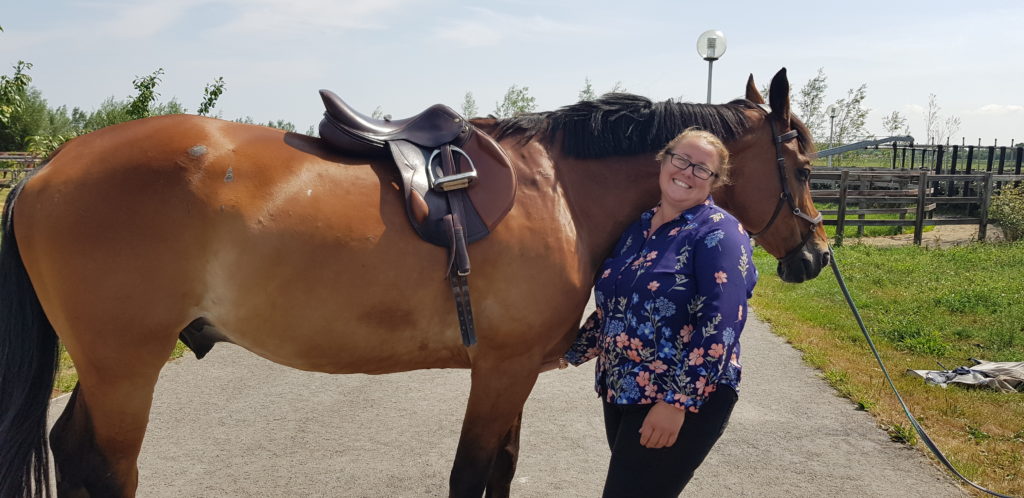SADDLE FIT FOR YOUNG HORSES – PART 1, BY GEORGIE WELGE
As is common for equine professionals, my keen interest in the horse, rider and saddle relationship developed while working with rehabilitation cases. Seeing how damaging improper saddle fit and improper training can be, led me down the rabbit hole of saddle fit. It has been 15 years since I officially became a saddle fitter and I continue learning new things to this day. My passion for horses started at an early age. I got my first horse at 18 and, of course, he was a foal. This horse, whom I spent 19 great years with, taught me a great deal. We went from one issue to another, diseases, injuries, followed by rehabilitation and frustration over not doing everything right from the get-go. Since then I have rehabilitated a lot of horses and each one taught me something new.
IT TAKES A VILLAGE!
This might be a bit out of the spectre of a saddle fitter’s job description, but if you ask me, you can’t fit a saddle properly without understanding biomechanics, anatomy and compensatory patterns in horses. In the past three years I have spent a lot of time following different professionals, from farriers, to physios, researchers, vets and everyone in between. They have really inspired me to look at the broader picture, and realise just how important the team approach is. The relationship between the horse, the rider and the saddle is a symbiosis that requires all the professionals involved to do their part. It takes a village! I wanted to make that absolutely clear before proceeding to the topic of this blog: saddle fit for young horses.

WHEN IS A HORSE READY?
Starting a young horse is a big job. The term “breaking a horse” is not really used anymore, because in this day and age, we understand that horses do not need to be subjugated to work with us. We understand that a healthy, happy horse trained correctly will happily comply with our requests. This is why starting a young horse under saddle is a big responsibility. If we do the process right (and unfortunately, also if we do it wrong) the horse will remember this process forever and some of his behaviour will undoubtedly stem from that early experience. So, let’s say we have a four-year-old youngster ready to start work. When do we introduce the saddle? It is important to note that introducing the saddle and introducing the rider are two different things. A young horse can carry a rider relatively soon, but the rider will have to wait a bit longer before boarding. A four-year old’s body that has not been trained yet is simply not ready to cope with the weight of the rider yet. He needs to become strong first. It is vital that the horse matures enough before we put a rider on him. No horse is ever mature before his 5th birthday, regardless of breed. At four years old a horse needs to first be taught how to carry himself.
RECREATING BALANCE AND SYMMETRY
Horses are not born straight or symmetrical, just as we are not. They do silly things out in the pasture while living out their youth and those will cause them to develop compensation patterns in their body. This can be mild and barely noticeable, or it can be severe, even in youngsters. If you observe a foal you will also note that they often choose the same hoof to be in front when they are grazing. Obviously, this will have an impact on the way the horse develops. So, you see, a four-year-old is not exactly a clean slate. It is our job to recreate balance and symmetry to help the horse use his body as efficiently as possible.
IF YOU LIKED THIS POST, YOU MAY ALSO BE INTERESTED IN THE CONTENT BELOW:
PART 2 OF THIS POST: https://www.equitopiacenter.com/saddle-fit-for-young-horses-part-2/
ONLINE COURSE: http://Associated content: https://www.equitopiacenter.com/shop/the-essential-guide-to-saddle-fitting/
VIDEO: https://www.equitopiacenter.com/videos/what-to-expect-in-a-saddle-fit-evaluation/







